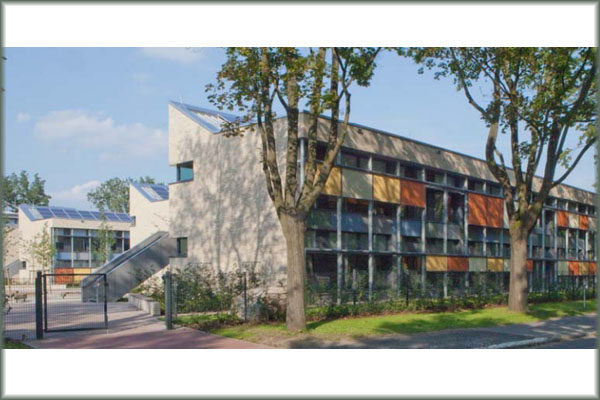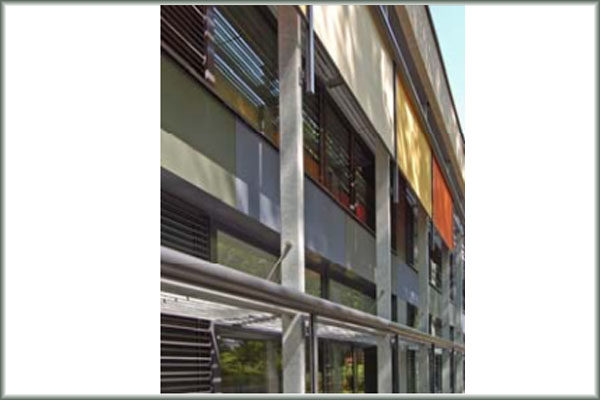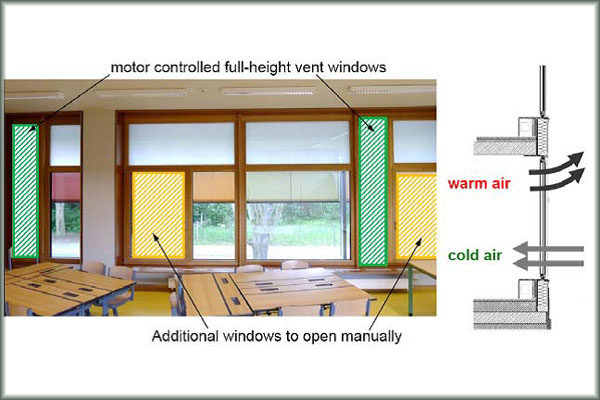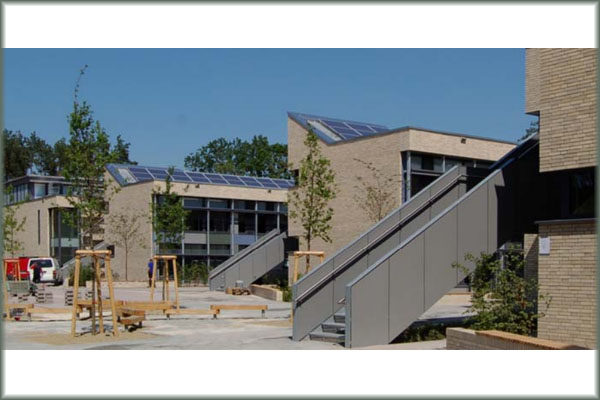Energy-Plus Primary School
Passive Design Strategies
Orientation
The classrooms are oriented to the south. This enables efficient solar shading, natural lighting und passive solar heating.
Building envelope and fenestration
- The main structure of the school building comprises of concrete walls, slabs and roof. Sports hall has a timber roof. The building has a very good thermal insulation level that achieves the passive house standard
| U- value of envelope |
| Exterior wall 1 |
0.15 W/m2K |
| Exterior wall 2 |
0.13 W/m2K |
| Windows |
0.80 W/m2K |
| Roof |
0.11 W/m2K |
| Slab |
0.10 W/m2K |
- Facade designed to provide efficient solar control, natural lighting und passive solar energy gain.
Ventilation
Hybrid ventilation concept
- Ventilation strategy is based on achieving a good balance of thermal comfort, air quality, user acceptance and energy efficiency. A combination of natural and controlled ventilation is used by grouping the classroom with a sanitary unit.
- Ventilation of the classrooms is primarily achieved by a rapid natural ventilation during the breaks using motor controlled full-height vent windows.
- Natural ventilation is combined with a small mechanical ventilation system for reducing high CO2 levels etc.
- The supply air flow for the classrooms correlates to the amount of the exhaust airflow needed for the sanitary units. Indoor thermal comfort in summer is achieved by means of night cooling using the motor controlled vent windows. Large areas of thermal storage mass are cooled using night cooling.
Daylighting and solar control
- Classroom facades are oriented south to provide sufficient solar shading, natural lighting, and passive solar heating.
- Fixed exterior blinds protect the windows against incident solar radiation in summer, and vertical fabric blinds enable efficient solar control aligned with user requirements.
- Windows not provided with fixed blinds have a Nano gel-glazing to diffuse daylight.
- Integrated fixed solar shading and daylight guiding louvers are available for windows without shading.
- Very high daylight autonomy
Acoustics and thermal storage mass
The concrete ceilings are left uncovered for good thermal contact and large parts of wall surfaces is covered by highly efficient broadband acoustic absorbers.





